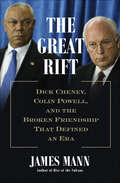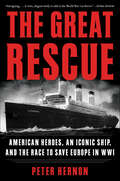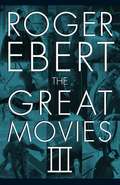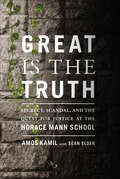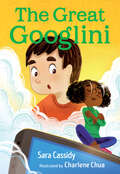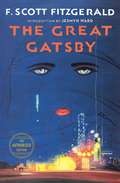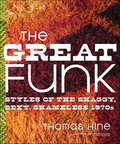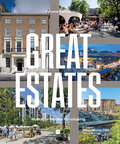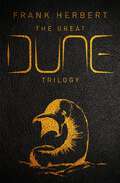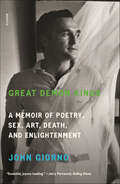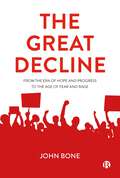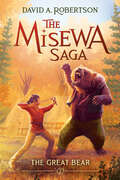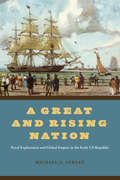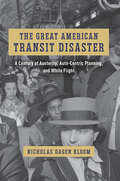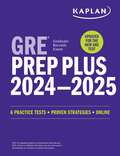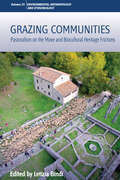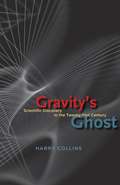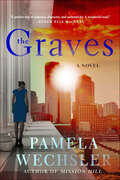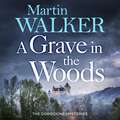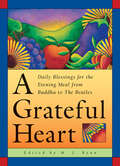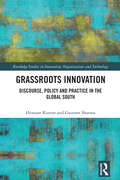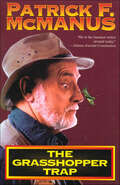- Table View
- List View
The Great Rift: Dick Cheney, Colin Powell, and the Broken Friendship That Defined an Era
by James MannThe Great Rift is a sweeping history of the intertwined careers of Dick Cheney and Colin Powell, whose rivalry and conflicting views of U.S. national security color our political debate to this day.Dick Cheney and Colin Powell emerged on the national scene more than thirty years ago, and it is easy to forget that they were once allies. The two men collaborated closely in the successful American wars in Panama and Iraq during the presidency of George H. W. Bush--but from this pinnacle, conflicts of ideology and sensibility drove them apart. Returning to government service under George W. Bush in 2001, they (and their respective allies within the administration) fell into ever-deepening antagonism over the role America should play in a world marked by terrorism and other nontraditional threats. In a wide-ranging, deeply researched, and dramatic narrative, James Mann explores each man’s biography and philosophical predispositions to show how and why this deep and permanent rupture occurred. Through dozens of original interviews and surprising revelations from presidential archives, he brings to life the very human story of how this influential friendship turned so sour and how the enmity of these two powerful men colored the way America acts in the world.
The Great Rescue: American Heroes, an Iconic Ship, and the Race to Save Europe in WWI
by Peter HernonPublished in commemoration of the centennial of America’s entry into World War I, the story of the USS Leviathan, the legendary liner turned warship that ferried U.S. soldiers to Europe—a unique war history that offers a fresh, compelling look at this epic time.When war broke out in Europe in August 1914, the new German luxury ocean liner SS Vaterland was interned in New York Harbor, where it remained docked for nearly three years—until the United States officially entered the fight to turn the tide of the war. Seized by authorities for the U.S. Navy once war was declared in April 2017, the liner was renamed the USS Leviathan by President Woodrow Wilson, and converted into an armed troop carrier that transported thousands of American Expeditionary Forces to the battlefields of France.For German U-Boats hunting Allied ships in the treacherous waters of the Atlantic, no target was as prized as the Leviathan, carrying more than 10,000 Doughboys per crossing. But the Germans were not the only deadly force threatening the ship and its passengers. In 1918, a devastating influenza pandemic—the Spanish flu—spread throughout the globe, predominantly striking healthy young adults, including soldiers.Peter Hernon tells the ship’s story across multiple voyages and through the experiences of a diverse cast of participants, including the ship’s captain, Henry Bryan; General John Pershing, commander of the American Expeditionary Force; Congressman Royal Johnson, who voted against the war but enlisted once the resolution passed; Freddie Stowers, a young black South Carolinian whose heroism was ignored because of his race; Irvin Cobb, a star war reporter for the Saturday Evening Post; and Elizabeth Weaver, an army nurse who saw the war’s horrors firsthand; as well as a host of famous supporting characters, including a young Franklin Delano Roosevelt.Thoroughly researched, dramatic, and fast-paced, The Great Rescue is a unique look at the Great War and the diverse lives it touched.
The Great Movies III
by Roger EbertRoger Ebert has been writing film reviews for the Chicago Sun-Times for over four decades now and his biweekly essays on great movies have been appearing there since 1996. As Ebert noted in the introduction to the first collection of those pieces, “They are not the greatest films of all time, because all lists of great movies are a foolish attempt to codify works which must stand alone. But it’s fair to say: If you want to take a tour of the landmarks of the first century of cinema, start here. Enter The Great Movies III, Ebert’s third collection of essays on the crème de la crème of the silver screen, each one a model of critical appreciation and a blend of love and analysis that will send readers back to the films with a fresh set of eyes and renewed enthusiasm—or maybe even lead to a first-time viewing. From The Godfather: Part II to Groundhog Day, from The Last Picture Show to Last Tango in Paris, the hundred pieces gathered here display a welcome balance between the familiar and the esoteric, spanning Hollywood blockbusters and hidden gems, independent works and foreign language films alike. Each essay draws on Ebert’s vast knowledge of the cinema, its fascinating history, and its breadth of techniques, introducing newcomers to some of the most exceptional movies ever made, while revealing new insights to connoisseurs as well. Named the most powerful pundit in America by Forbes magazine, and a winner of the Pulitzer Prize, Roger Ebert is inarguably the most prominent and influential authority on the cinema today. The Great Movies III is sure to please his many fans and further enhance his reputation as America’s most respected—and trusted—film critic.
Great Is the Truth: Secrecy, Scandal, and the Quest for Justice at the Horace Mann School
by Amos Kamil Sean ElderA shocking exposé of sexual abuse and the struggle for justice at one of America's most prestigious schoolsIn June 2012, Amos Kamil's New York Times Magazine cover story, "Prep-School Predators," caused a shock wave that is still rippling. In his piece, Kamil detailed a decades-long pattern of sexual abuse at the highly prestigious Horace Mann School in the Bronx. After the article appeared, Kamil closely observed the fallout. While the article revealed the misdeeds of three teachers, this was just the beginning: an extraordinary twenty-two former Horace Mann teachers and administrators have since been accused of abuse. In Great Is the Truth, Kamil and his coauthor, Sean Elder, tell the riveting story of how one of the country's leading schools was beset by scandal. In 1970, Horace Mann hired R. Inslee "Inky" Clark Jr. as its headmaster. As Yale's wunderkind dean of admissions, Clark had helped revolutionize the Ivy League by recruiting a more diverse student body. In the coming years, he would raise Horace Mann to new heights of academic distinction even as serious complaints against beloved teachers were ignored. Kamil and Elder introduce those teachers, among them a popular football coach who had reportedly tried out for the Washington Redskins, a distinguished conductor who took his prize students on foreign trips, an otherworldly English teacher who discussed Eastern philosophy over tea and helped tend the school's gardens, and another English instructor, who told his students that they were mere dust under his foot in comparison to Shakespeare. In gripping detail, Kamil and Elder relate what happened as survivors of abuse came forward and sought redress. We see the school and its influential backers circle the wagons. We meet Horace Mann alumni who work to change New York State's sexual abuse laws. We follow a celebrity lawyer's contentious efforts to achieve a settlement. And we encounter a former teacher who candidly recalls his inappropriate relationships with students. Kamil and Elder also examine other institutions-from prep schools to the Catholic Church-that have sought to atone for their complicity in abuse and to prevent it from reoccurring. "Great is the truth and it prevails" may be the motto of Horace Mann, but for many alumni the truth remains all too hard to come by. This book is essential reading for anyone trying to understand how an elite institution can fail those in its charge, and what can be done about it.
The Great Googlini (Orca Echoes)
by Sara CassidyFilip, the ten-year-old son of Croatian immigrants, lives in a boring suburb of the big city, where he passes his time either at school or in his cozy kitchen, googling everything from dinosaurs to the Hubble Space Telescope. When his favorite uncle gets sick, Filip turns to Google for answers. Instead he receives a visit from the Great Googlini, a tiny woman in Converse sneakers who swirls out of the computer vents. She's not really a genie, she explains: "I'm more of an archivist." Her visit is a little bit of magic that lets Filip see the magic all around him. Ultimately about the things we can know and the things we can't, this is a smart, touching, funny chapter book about growing up, braving tough times and looking for answers. The epub edition of this title is fully accessible.
The Great Gatsby: The Only Authorized Edition
by F. Scott FitzgeraldThe only edition of the beloved classic that is authorized by Fitzgerald&’s family and from his lifelong publisher. This edition is the enduring original text, updated with the author&’s own revisions, a foreword by his granddaughter, and with a new introduction by National Book Award winner Jesmyn Ward. The Great Gatsby, F. Scott Fitzgerald&’s third book, stands as the supreme achievement of his career. First published by Scribner in 1925, this quintessential novel of the Jazz Age has been acclaimed by generations of readers. The story of the mysteriously wealthy Jay Gatsby and his love for the beautiful Daisy Buchanan is an exquisitely crafted tale of America in the 1920s.
The Great Funk: Styles of the Shaggy, Sexy, Shameless 1970s
by Thomas HineIn the sixties, as the nation anticipated the conquest of space, the defeat of poverty, and an end to injustice at home and abroad, no goal seemed beyond America's reach. Then the seventies arrived-bringing oil shocks and gas lines, the disgrace and resignation of a president, defeat in Vietnam, terrorism at the 1972 Munich Olympics, urban squalor, bizarre crimes, high prices, and a bad economy. The country fell into a great funk. But when things fall apart, you can take the fragments and make something fresh. Avocado kitchens and Earth Shoes may have been ugly, but they signaled new modes of seeing and being. The first generation to see Earth from space found ways to make life's everyday routines-eating, keeping warm, taking out the trash-meaningful, both personally and globally. And many decided to reinvent themselves. In Populuxe, a "textbook of consumerism in the Push Button Age" (Alan J. Adler, Los Angeles Times), Thomas Hine scrutinized the looks and life of the 1950s and 1960s, revealing the hopes and fears expressed in that era's design. In the same way, The Great Funk: Falling Apart and Coming Together (on a Shag Rug) in the Seventies maps a complex era by looking at its ideas, feelings, sex, fashions, textures, gestures, colors, demographic forces, artistic expressions, and other phenomena that shaped our lives. Hine gets into the shoes and heads of those who experienced the seventies-exploring their homes, feeling the beat of their music, and scanning the ads that incited their desires. But The Great Funk is more than a lavish catalogue of seventies culture: it's a smart, informed, lively look at the "Me decade" through the eyes of the man House & Garden called "America's sharpest design critic."
The Great Family of Life: Rethinking the place of Homo sapiens in the Biosphere
by David Rodríguez-RodríguezThis book explains the causes, consequences and desirable solutions to the unbalanced and unfair relationship between Homo sapiens and the other species that inhabit Planet Earth in a succinct, enjoyable and thought-provoking way. Major sociological, economic, political, educational, religious and phylosophical perspectives are reviewed in order to understand why we have reached the current alarming status of global biodiversity during the Anthropocene, and how we can react to it to attain not just human welfare, but global happiness. The target audience is wide, from the general public interested in the deep inner causes of environmental degradation, to college and university students and lecturers, notably in the fields of environmental ethics, environmental philosophy, environmental law and environmental politics.
Great Estates: Models for modern placemaking
by Peter Murray Sarah YatesThe only book that brings together all London’s historic and contemporary Great Estates - documents a remarkable history, unique to England but with lessons for landowners and communities around the world. - Shows how they shape the way development takes place in England – providing essential lessons to all those wishing to understand city planning, whether practitioners or academics. - Provides a model example of corporate modernisation following the impact of leasehold reform. Much of the story of London's development can be traced through the historic ownership of large pieces of land which, through the ongoing ownership of freehold assets and their lease terms, have created a resilient cycle of change and renewal. Today this long-term attitude to investment, development and management has influenced the development of new large-scale and mixed-use areas of the capital, such as King's Cross, Canary Wharf, and the Olympic Park. This book provides a comprehensive picture on all of London’s historic and contemporary estates, and sets out what we can learn from them on the most successful principles of placemaking for the future. Part retrospective, part forward-looking, the book will provide lessons on place-shaping, management and stewardship, for global cities looking to learn from this unique London model.
The Great Dune Trilogy: Dune, Dune Messiah, Children of Dune
by Frank HerbertThree of the greatest SF novels in the world in one bumper omnibus, and the inspiration for the spectacular cinematic events Dune: Part One and Dune: Part Two.'An astonishing science fiction phenomenon' WASHINGTON POST'I know nothing comparable to it except The Lord of the Rings' Arthur C ClarkeHerbert's evocative, epic tales are set on the desert planet Arrakis, the focus for a complex political and military struggle with galaxy-wide repercussions.Arrakis is the source of spice, a mind-enhancing drug which makes interstellar travel possible; it is the most valuable substance in the galaxy. When Duke Atreides and his family take up court there, they fall into a trap set by the Duke's bitter rival, Baron Harkonnen. The Duke is poisoned, but his wife and her son Paul escape to the vast and arid deserts of Arrakis, which have given the planet its nickname of Dune.Paul and his mother join the Fremen, the Arrakis natives, who have learnt to live in this harsh and complex ecosystem. But learning to survive is not enough - Paul's destiny was mapped out long ago and his mother is committed to seeing it fulfilled.Read the books which inspired the Academy Award-winning and jaw-dropping cinematic events Dune: Part One (2021) and Dune: Part Two (2024), starring Timothee Chalomet, Florence Pugh, Jessica Ferguson and Austin Butler. A science fiction spectacular like no other, this is a deeply climate conscious novel, and a compelling family saga for the ages.* * * * * * * * * * * * *'This is - quite simply - the most magnificent Sci-Fi epic ever written . . . The scope of Asimov's Foundation, the attention to detail and context of Tolkien's LotR, coupled with an unmatched visionary socio-ecological messianic narrative that is scarily relevant today ' Goodreads reviewer, ⭐ ⭐ ⭐ ⭐ ⭐'Frank Herbert's immortal space opera that created many of the tropes we take for granted inside them is a book that doesn't need my endorsement . . . the nobility is some of the most decadent and depraved in fiction . . . It's a fantastic book, amazing story' Goodreads reviewer, ⭐ ⭐ ⭐ ⭐ ⭐'The blend of science-aversion, exploitation of the naive by systematic manipulation of religion and witchcraft, and the harsh realities of life in a barren and mineral depleted desert is astounding. I love these books!' Goodreads reviewer, ⭐ ⭐ ⭐ ⭐ ⭐'Herbert succeeds at juxtaposing so many different elements: ecology, religion, consciousness, feudalism, space travel... gawsh, I could go on! . . . It is a mainly character-driven plot, with the three books in this trilogy focusing on the Atreides family on Dune . . . I think everyone should delve into this world, let themselves be absorbed by it. It makes you question your reality, your choices, your relationships and the impact you have on the world, or the impact the world has on you' Goodreads reviewer, ⭐ ⭐ ⭐ ⭐ ⭐'Dune perhaps epitomises science-fiction. The willingness to embrace big ideas and show them playing out on a broad canvas . . . You have to read it to believe it' Goodreads reviewer
Great Demon Kings: A Memoir of Poetry, Sex, Art, Death, and Enlightenment
by John GiornoA rollicking, sexy memoir of a young poet making his way in 1960s New York CityWhen he graduated from Columbia in 1958, John Giorno was handsome, charismatic, ambitious, and eager to soak up as much of Manhattan's art and culture as possible. Poetry didn't pay the bills, so he worked on Wall Street, spending his nights at the happenings, underground movie premiers, art shows, and poetry readings that brought the city to life. An intense romantic relationship with Andy Warhol—not yet the global superstar he would soon become—exposed Giorno to even more of the downtown scene, but after starring in Warhol's first movie, Sleep, they drifted apart. Giorno soon found himself involved with Robert Rauschenberg and later Jasper Johns, both relationships fueling his creativity. He quickly became a renowned poet in his own right, working at the intersection of literature and technology, freely crossing genres and mediums alongside the likes of William Burroughs and Brion Gysin.Twenty-five years in the making, and completed shortly before Giorno's death in 2019, Great Demon Kings is the memoir of a singular cultural pioneer: an openly gay man at a time when many artists remained closeted and shunned gay subject matter, and a devout Buddhist whose faith acted as a rudder during a life of tremendous animation, one full of fantastic highs and frightening lows. Studded with appearances by nearly every it-boy and girl of the downtown scene (including a moving portrait of a decades-long friendship with Burroughs), this book offers a joyous, life-affirming, and sensational look at New York City during its creative peak, narrated in the unforgettable voice of one of its most singular characters.
The Great Decline: From the Era of Hope and Progress to the Age of Fear and Rage
by John BoneIt seems clear that many formerly stable societies in wealthy developed countries appear to be falling into an apparent state of ‘permacrisis' accompanied by an increasingly angry and irrational social and political culture that is undermining the peace and stability of our societies and democratic institutions, from the local to the global. Applying an original biosocial approach (the social map), and drawing on ideas and evidence from sociology, history and political economy, to psychology, neuroscience and epigenetics, John Bone argues that conditions in our turbocapitalist and increasingly estranged, media dominated societies have created a toxic environment, deeply damaging to our mental and physical health. As well as shedding new light on our current troubles, Bone also outlines why this leaves us ill prepared to deal with two of the greatest challenges confronting humanity: the rise of AI and automation and how we deal with climate change.
The Great Bear: The Misewa Saga, Book Two (The Misewa Saga #2)
by David A. RobertsonIn this second book in the Narnia-inspired Indigenous middle-grade fantasy series, Eli and Morgan journey once more to Misewa, travelling back in time.Back at home after their first adventure in the Barren Grounds, Eli and Morgan each struggle with personal issues: Eli is being bullied at school, and tries to hide it from Morgan, while Morgan has to make an important decision about her birth mother. They turn to the place where they know they can learn the most, and make the journey to Misewa to visit their animal friends. This time they travel back in time and meet a young fisher that might just be their lost friend. But they discover that the village is once again in peril, and they must dig deep within themselves to find the strength to protect their beloved friends. Can they carry this strength back home to face their own challenges?
A Great and Rising Nation: Naval Exploration and Global Empire in the Early US Republic (American Beginnings, 1500-1900 Ser.)
by Michael A. VerneyA Great and Rising Nation illuminates the unexplored early decades of the United States’ imperialist naval aspirations. Conventional wisdom holds that, until the Spanish-American War of 1898, the United States was a feeble player on the world stage, with an international presence rooted in commerce rather than military might. Michael A. Verney’s A Great and Rising Nation flips this notion on its head, arguing that early US naval expeditions, often characterized as merely scientific, were in fact deeply imperialist. Circling the globe from the Mediterranean to South America and the Arctic, these voyages reflected the diverse imperial aspirations of the new republic, including commercial dominance in the Pacific World, religious empire in the Holy Land, proslavery expansion in South America, and diplomatic prestige in Europe. As Verney makes clear, the United States had global imperial aspirations far earlier than is commonly thought.
The Great American Transit Disaster: A Century of Austerity, Auto-Centric Planning, and White Flight (Historical Studies Of Urban America Ser.)
by Nicholas Dagen BloomA potent re-examination of America’s history of public disinvestment in mass transit. Many a scholar and policy analyst has lamented American dependence on cars and the corresponding lack of federal investment in public transportation throughout the latter decades of the twentieth century. But as Nicholas Dagen Bloom shows in The Great American Transit Disaster, our transit networks are so bad for a very simple reason: we wanted it this way. Focusing on Baltimore, Atlanta, Chicago, Detroit, Boston, and San Francisco, Bloom provides overwhelming evidence that transit disinvestment was a choice rather than destiny. He pinpoints three major factors that led to the decline of public transit in the United States: municipal austerity policies that denied most transit agencies the funding to sustain high-quality service; the encouragement of auto-centric planning; and white flight from dense city centers to far-flung suburbs. As Bloom makes clear, these local public policy decisions were not the product of a nefarious auto industry or any other grand conspiracy—all were widely supported by voters, who effectively shut out options for transit-friendly futures. With this book, Bloom seeks not only to dispel our accepted transit myths but hopefully to lay new tracks for today’s conversations about public transportation funding.
GRE Prep Plus 2024-2025 - Updated for the New GRE: 6 Practice Tests + Live Classes + Online Question Bank and Video Explanations (Kaplan Test Prep)
by Kaplan Test PrepAchieve your professional goals with a higher GRE score. Kaplan's GRE Prep Plus 2024-2025 prepares you for success on the GRE with expert strategies, essential content review, and six realistic full-length practice tests. And unlike other prep books, purchasing GRE Prep Plus 2024-2025 grants you access to live online class sessions every week on the Kaplan GRE Channel. We&’re so certain that GRE Prep Plus 2024-2025 offers all the knowledge you need to excel at the GRE that we guarantee it: After studying with the online resources and book, you'll score higher on the GRE—or you'll get your money back.The Best Practice Five full-length online tests help you practice in the same computer-based format you'll see on test day. One full-length practice test included in the book for when online is not an option. More than 1,500 questions with detailed explanations. Video explanations of selected questions. 500-question online Qbank that lets you select problems by topic and difficulty and customize your practice. Chapters on each GRE question type and math skill, with practice sets for each. Questions have been reviewed, revised, and updated by Kaplan's expert faculty. Expert GuidanceAttend live class sessions with Kaplan GRE experts every week on the GRE Channel Online study-planning tool helps you target your prep no matter how much time you have before the test. We know the test: Our learning engineers have put tens of thousands of hours into studying the GRE, and we use real data to design the most effective strategies and study plans. Kaplan's books and practice questions are written by veteran teachers who know students—every explanation is written to help you learn. We invented test prep—Kaplan (kaptest.com) has been helping students prepare for the tests for over 80 years and we offer some of the best-selling books on GRE prep, GED, SAT, and ACT test prep, MCAT study guides, and more. Want to boost your studies with even more online practice and in-depth GRE math and verbal workbooks? Try Kaplan's GRE Complete 2024-2025.
Grazing Communities: Pastoralism on the Move and Biocultural Heritage Frictions (Environmental Anthropology and Ethnobiology #29)
by Letizia BindiPastoralism is a diffused and ancient form of human subsistence and probably one of the most studied by anthropologists at the crossroads between continuities and transformations. The present critical discourse on sustainable and responsible development implies a change of practices, a huge socio-economic transformation, and the return of new shepherds and herders in different European regions. Transhumance and extensive breeding are revitalized as a potential resource for inner and rural areas of Europe against depopulation and as an efficient form of farming deeply influencing landscape and functioning as a perfect eco-system service. This book is an occasion to reconsider grazing communities’ frictions in the new global heritage scenario.
Gravity's Ghost: Scientific Discovery in the Twenty-first Century
by Harry CollinsIn theory, at least, gravitational waves do exist. We are constantly bathed in gravitational radiation, which is generated when stars explode or collide and a portion of their mass becomes energy that ripples out like a disturbance on the surface of a serene pond. But unfortunately no gravitational wave has ever been directly detected even though the search has lasted more than forty years.As the leading chronicler of the search for gravitational waves, Harry Collins has been right there with the scientists since the start. The result of his unprecedented access to the front lines of physical science is Gravity’s Ghost, a thrilling chronicle of high-stakes research and cutting-edge discovery. Here, Collins reveals that scientific discovery and nondiscovery can turn on scientific traditions and rivalries, that ideal statistical analysis rests on impossible procedures and unattainable knowledge, and that fact in one place is baseless assumption in another. He also argues that sciences like gravitational wave detection, in exemplifying how the intractable is to be handled, can offer scientific leadership a moral beacon for the twenty-first century. In the end, Gravity’s Ghost shows that discoveries are the denouements of dramatic scientific mysteries.
The Graves: A Novel (The Abby Endicott Novels #2)
by Pamela WechslerAbby Endicott, the chief of the District Attorney’s homicide unit in Boston, returns in the heart-racing follow-up to Mission Hill. Things are looking good for Abby: she’s top pick to be the next District Attorney, and her musician boyfriend Ty has moved in, despite her upper crust family’s objections. But a serial killer is on the loose, and with two college-aged girls dead and another missing, time is running out. When the sons of a prominent government official are linked to the murders, Abby pushes back, stopping at nothing to find justice for the girls. This time, the killer could be right under her nose, and she may be the next victim.In The Graves, former prosecutor turned television writer Pamela Wechsler delivers a tense and enthralling Boston-set thriller about the intersection of power, privilege, and justice.
Gravedigger (A Dave Brandstetter Mystery #6)
by Joseph HansenCELEBRATING 50 YEARS OF DAVE BRANDSTETTERA cult leader named Azrael perpetrates a brutal mass murder and afterwards a slimy lawyer is trying to claim the life insurance policy for his missing daughter; it's the early '80s in Los Angeles and private investigator Dave Brandstetter has a new love in his life as exciting as this case is dreadful. Two years ago Charles Westover disgraced himself and his family when he was disbarred for bribery. Westover&’s daughter Serenity, disgusted with her once beloved father, ran away to a cult founded by a mesmerizingly handsome young man, a self-appointed messiah going by the grimly grandiose name of Azrael. The whereabouts of Serenity pass unknown for years until the police raid Azrael&’s compound and discover that the cult leader lived up to his ghastly &“Angel of Death&” moniker. Thinking his daughter has been murdered, Charles Westover claims her life insurance, and then he too vanishes. Insurance companies don&’t like to cut a check without a body and especially don&’t like cutting a check to someone who is also missing. Hired as a private investigator for Banner Insurance, David Brandstetter quickly finds himself in a complicated maze of lies and hidden histories. And Dave suspects that, just like in the labyrinths of old, there will be a monster at the end of it. It's not all bad times and extreme hazard for our man Dave. A passionate romance has entered his life with the reappearance of Cecil Harris, a handsome young African American investigative reporter for the local news station looking to get to the bottom of a different kind of story.
A Grave in the Woods (The Dordogne Mysteries #35)
by Martin WalkerIn his latest adventure Bruno, France's favourite country cop, investigates a long-buried war crime and faces a devastating flood that threatens the town he polices and the people he loves.'FRENCH TOURISM SHOULD RAISE A GLASS TO WALKER'S DORDOGNE MYSTERIES' Daily MailThe long arm of history reaches into the present in Bruno's latest case when three sets of bones are discovered, buried deep in the woods outside the Dordogne town of St Denis. It appears that the remains have lain there since World War 2. Bruno must investigate who the bones belong to and whether their burial amounts to a war crime.Bruno has other concerns too. After weeks of heavy autumn rain, the normally tranquil Dordogne river has risen to record levels, compromising the upriver dams that control the Vezere that flows through St Denis, bringing the threat of a devastating flood. As ever, Bruno must rely on his wits, tenacity and people skills to ensure that past wrongs don't result in present violence, and to keep his little town and its inhabitants safe from harm.
A Grave in the Woods (The Dordogne Mysteries #35)
by Martin WalkerIn his latest adventure Bruno, France's favourite country cop, investigates a long-buried war crime and faces a devastating flood that threatens the town he polices and the people he loves.'FRENCH TOURISM SHOULD RAISE A GLASS TO WALKER'S DORDOGNE MYSTERIES' Daily MailThe long arm of history reaches into the present in Bruno's latest case when three sets of bones are discovered, buried deep in the woods outside the Dordogne town of St Denis. It appears that the remains have lain there since World War 2. Bruno must investigate who the bones belong to and whether their burial amounts to a war crime.Bruno has other concerns too. After weeks of heavy autumn rain, the normally tranquil Dordogne river has risen to record levels, compromising the upriver dams that control the Vezere that flows through St Denis, bringing the threat of a devastating flood. As ever, Bruno must rely on his wits, tenacity and people skills to ensure that past wrongs don't result in present violence, and to keep his little town and its inhabitants safe from harm.
A Grateful Heart: Daily Blessings for the Evening Meals from Buddha to The Beatles (Daily Blessings For The Evening Meal From Buddha To The Beat Ser.)
by M. J. RyanCelebrate the Human Experience by Giving Thanks at Mealtime. Try It!Count your blessings. Today there is a deep hunger for connection with ourselves, with nature, and with the process of birth and death itself says life coach and author M. J. Ryan, creator of the New York Times best-selling Random Acts of Kindness series. What her book, A Grateful Heart, is offering from a wide variety of spiritual disciplines and secular perspectives, is a way of satisfying that hunger by setting aside time before we eat to acknowledge the blessings in our lives. When we give thanks, we take our place in the great wheel of life, recognizing our connection to one another and to all of creation.Choose from 365 blessings and give thanks. A Grateful Heart is a tool to help readers reclaim and enrich the tradition of pausing before the evening meal to give thanks. Drawing from a range of religious and cultural practices, the 365 blessings in this book celebrate friendship, love, peace, reconciliation, the body, nature, joy, and appreciation of the moment. This illustrated feast for the mind includes quotations from Martin Luther King Jr., Thich Nhat Hanh, Gandhi, Rumi, Mother Teresa, Helen Keller, Denise Levertov, the Bible, and the Tao Te Ching.M. J. Ryan wrote A Grateful Heart to encourage families to share the experience of being part of something greater than themselves. With that in mind, the book includes 365 traditional and nontraditional blessings organized into four sections corresponding to the seasons.Experience the blessings in A Grateful Heart in a variety of ways:Just open it and begin reading one-a-day in the order givenUse the index to pick and choose topics of interest that dayOpen at random and read what is offeredIf you have benefited from books such as Earth Prayers, M. J. Ryan’s Attitudes of Gratitude, Don Miguel Ruiz’s Prayers, June Cotner’s Graces, or Marcia M. Kelly’s 100 Graces; you and your family will love M. J. Ryan’s A Grateful Heart.
Grassroots Innovation: Discourse, Policy and Practice in the Global South (Routledge Studies in Innovation, Organizations and Technology)
by Gautam Sharma Hemant KumarThis book explores the process of grassroots innovation in the context of the Global South. It explains why these bottom-up solutions developed by common people are generated due to a lack of available or affordable technology to meet their needs and how they are included in the mainstream imagination of the economy by studying these innovations in India. It analyses the grassroots innovation process from idea generation to its implementation.Detailing both theoretical and practical dimensions of grassroots innovation, the book provides a holistic understanding of the phenomenon by tracing its history in the pre-independence discourse on development to the present-day policies for institutionalizing these innovations in the mainstream. It will provide the readers with a bottom-up commentary on innovation and development in the context of the Global South in general and India in particular. It adopts a qualitative research design with a wide range of data collected through interviews, participant observations, and field notes. The book contains seven chapters to describe the discourse, policy perspectives, and current practice of grassroots innovations in general.The interdisciplinary, timely book provides thoughtful analysis for scholars and upper-level students in the fields of technology and innovation management, development studies, and public management.
The Grasshopper Trap
by Patrick F. McManusPatrick F. McManus, the “funniest guy in the Outdoor Life and Field & Stream gang…offers another bag of whimsy in the Great Outdoors”* with The Grasshopper Trap. In this collection of thirty zany stories, spoofing camping, fishing, and other outdoor recreational activities, McManus shares his hilarious wilderness misadventures. From facing an angry bear with an unloaded gun and the folly of running a boat while it’s still on the trailer to not questioning the ingredients found in camp cookout cuisine and the best methods of catching grasshoppers, no one knows how to express Mother Nature’s sense of humor like Patrick F. McManus. “It’s enough to tickle the most rabid member of the National Rifle Association.”—*Kirkus Reviews
